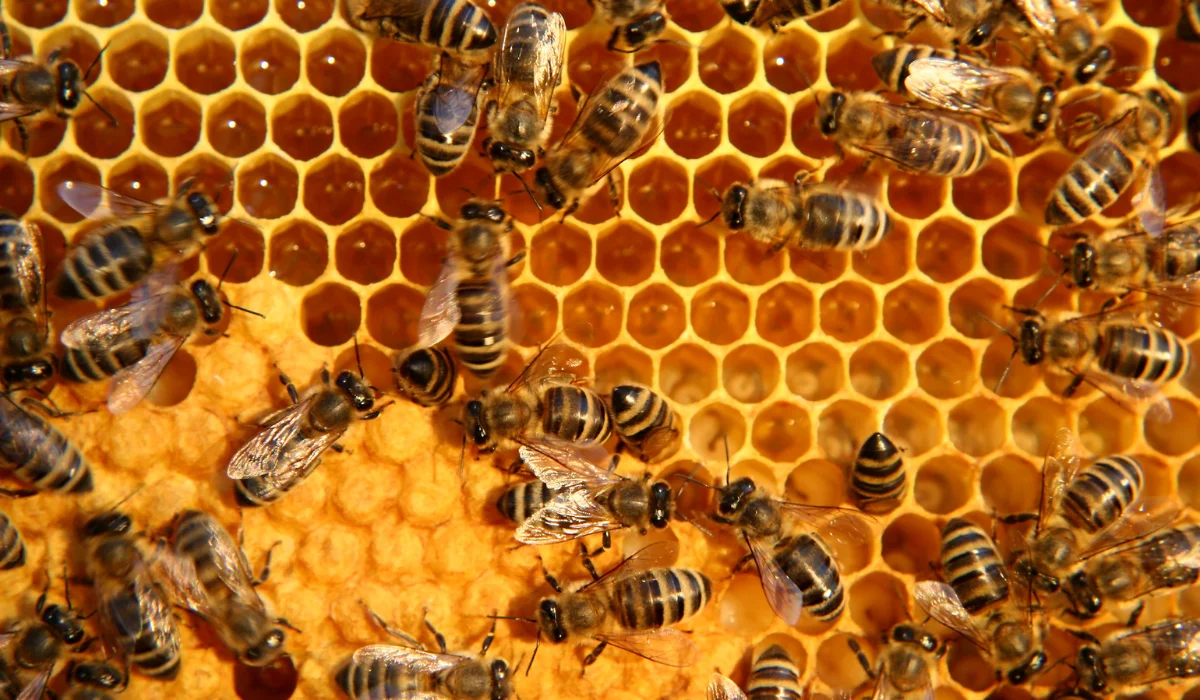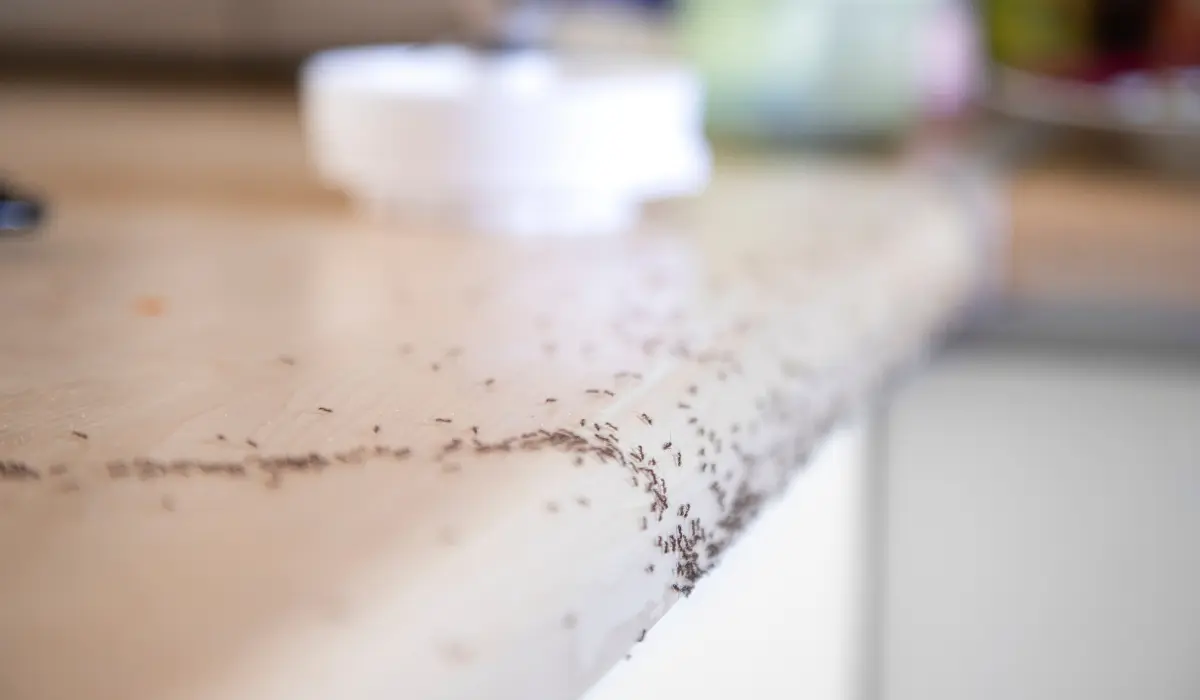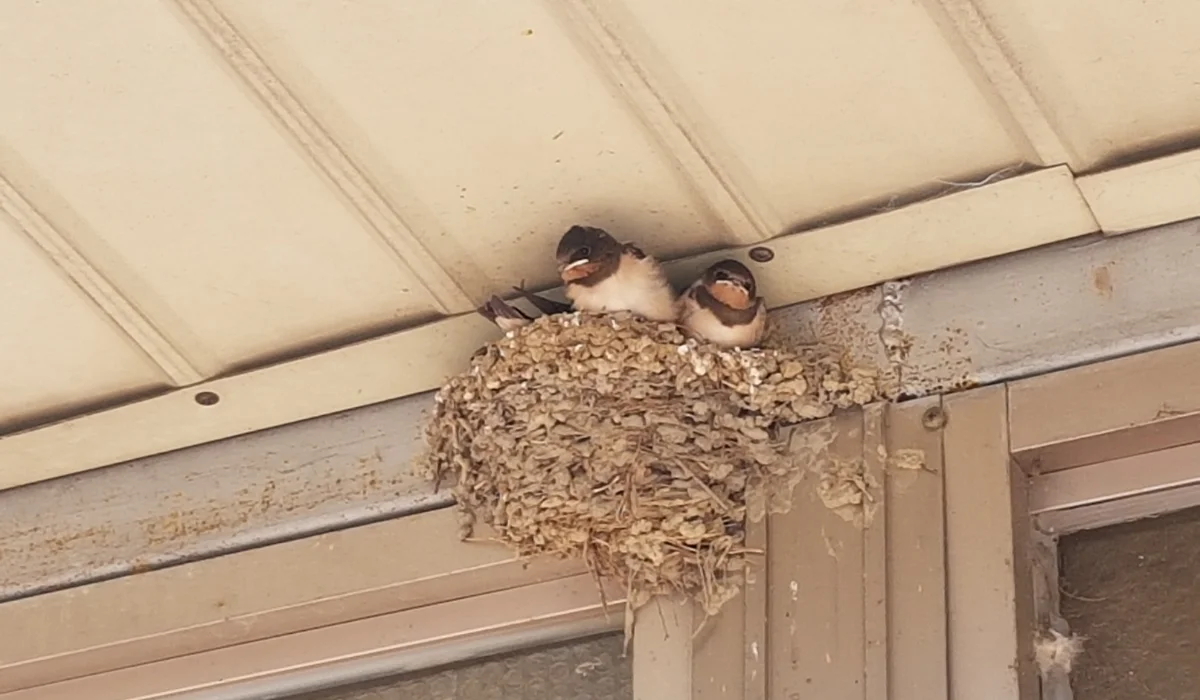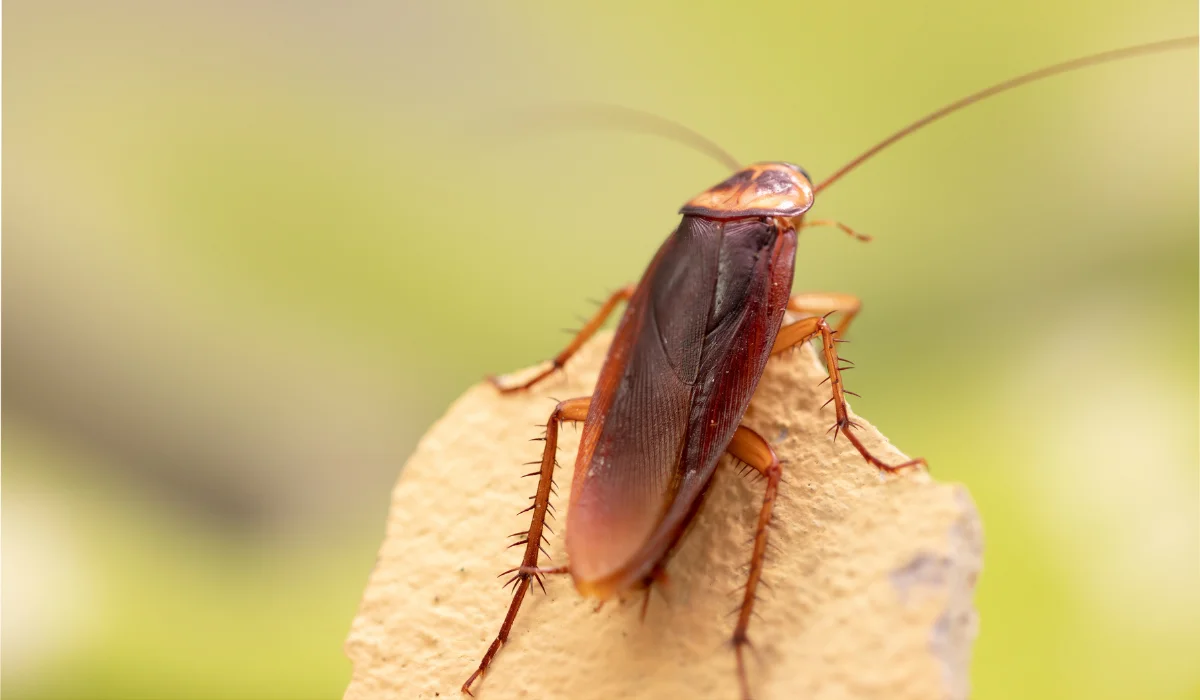If you’ve lived in Southern Louisiana for any time, you’ve seen bees buzzing around once the weather starts warming up. But when exactly does bee season begin here?
Whether you’re a gardener, a parent concerned about stings, or someone just trying to avoid an unwanted bee nest on your porch, understanding the timing of the bee season matters.
Let’s talk about when bees come out in Louisiana, what makes them show up, and what steps you should take when they do.
Key Takeaways
• Bee season in Louisiana usually starts in March and can stretch into late summer depending on the weather.
• Warmer days, local flowers, and the type of bee all play a significant role in when bees come out.
• Swarms, nests in wood, and high bee traffic are common signs that bees are active around your home.
• A local pest control expert can help if bees or wasps are showing up in places they shouldn’t be.
When Do Bees Come Out in Louisiana?
In Louisiana, bees typically start coming out in early spring, usually around March. By the time we reach late spring and early summer, you’ll see a full buzz of activity with worker bees, queen bees, and even bee swarms looking to form a new hive.
The season often stretches into late summer. Some bee species, like bumblebees, may even be active year-round in milder pockets of the region.
However, not every year plays out the same when it comes to their activity. Here’s what influences when they start coming out:
Temperature Changes
Bees don’t use calendars. They rely on temperatures.
Once daytime highs start staying above 55°F consistently, adult bees emerge from overwintering. Some species of bees, especially those with shorter lifespans, are quick to respond to early warmth.
And when honey bees wake up early, they may begin preparing their colony for growth, which includes feeding the larvae and raising a new queen.
Availability of Flowering Plants
The presence of nectar-rich flowers plays a big role.
In Louisiana, things like azaleas, red clover, and wildflowers start blooming in early spring. These resources support not just bees, but the broader ecosystem of pollinators.
When nectar is available, bees begin foraging to build up honey stores in the beehive. A strong nectar flow keeps them active and reproducing.
Bee Species Behavior
Different types of bees behave differently. For instance, mason bees and bumblebees emerge early in the season, while carpenter bees might appear around the same time but focus more on nesting in wood to begin laying eggs.
Honey bees, in contrast, coordinate through pheromones and rely heavily on internal hive dynamics to regulate activity.
Each life cycle stage inside the hive—from egg to larvae to adult bees—is carefully timed based on the season.
Rainfall and Humidity
High spring rainfall can delay bee activity.
Bees are reluctant to fly in heavy rain or damp, cool air. Since Louisiana is known for its spring showers, you might see activity spike right after a dry spell, especially among species that are more aggressive foragers.
During wet stretches, some bees even temporarily hibernate inside the hive.
Local Settings
If you live in a suburban or rural part of Louisiana, bees may become active sooner due to more access to natural food sources and fewer man-made barriers.
Beekeepers in these areas often note early shifts in honey production depending on the time of year, with spring being the start of intense foraging and colony expansion.
What to Do When Bees Start Coming Out
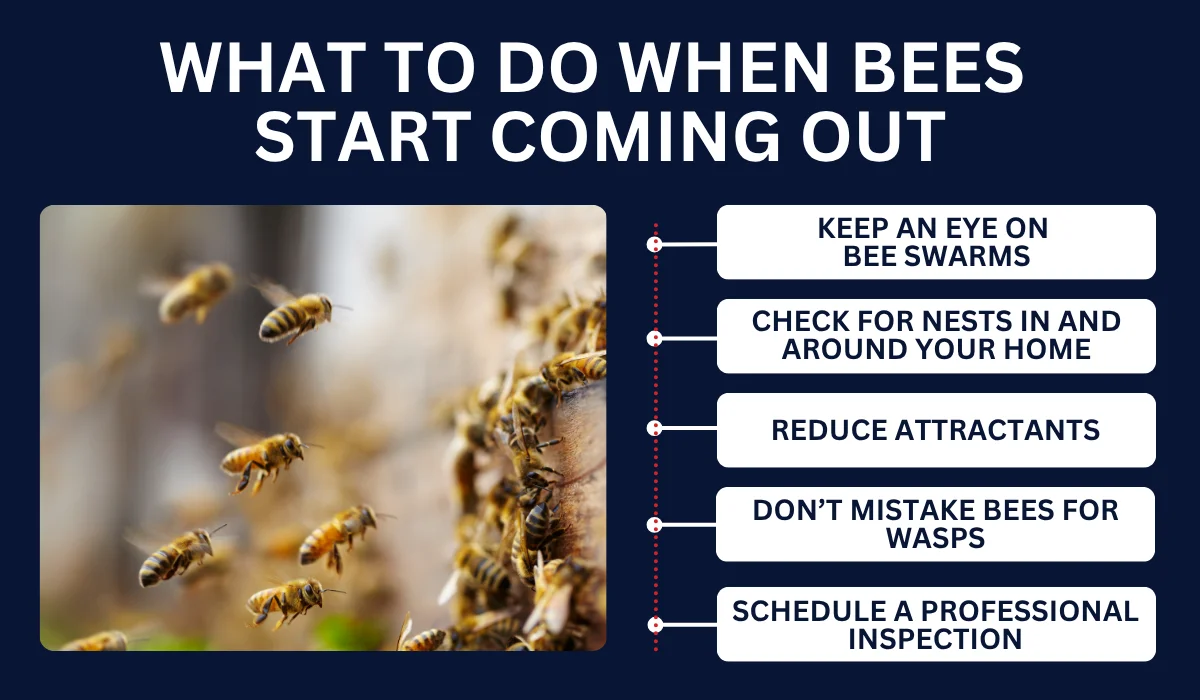
Once bees start showing up, there are a few things you’ll want to keep an eye on around your home.
Keep an Eye on Bee Swarms
Bee swarms are a natural part of the life cycle of a growing honey bee colony. They look intimidating, but they’re not aggressive.
Swarming bees are just looking for a new home. If you spot a swarm on a tree or fence, don’t panic or disturb it. Call a local bee control professional or even a beekeeper who can safely relocate them.
Check for Nests in and Around Your Home
Once bee season kicks off, it’s smart to check under eaves, inside sheds, or around decking for signs of a nest. Carpenter bees, in particular, drill into untreated wood to lay their larvae, and their tunnels can lead to structural damage over time.
Left alone, these nests can lead to a full infestation, especially in homes with multiple entry points.
Reduce Attractants
Bees are drawn to open food, sugary drinks, and flowering plants near your home’s entryways.
If you’re trying to avoid bee traffic near doors and windows, relocate plants and clean up spills or garbage promptly, especially during late spring when bee populations are peaking and the demand for honey stores is high.
Don’t Mistake Bees for Wasps
As the weather warms, wasps become more active, too. So, knowing the difference is important. Honey bees are rounder and hairier, while wasps are slimmer with longer legs.
If you’re not sure, it’s better to have a professional take a look rather than take risks with a potential infestation.
Schedule a Professional Inspection
If bees are showing up in unusual places or you’re worried about a growing colony, it’s time to call in professionals. A thorough inspection will help determine if you’re dealing with solitary bees or social bee species, and what action, if any, needs to be taken.
Sometimes the presence of a strong pheromone trail left by scouts can signal that more bees are on the way.
Need Help With the Bee Season? Here’s What to Do Next
When bee season kicks off in Southern Louisiana, the best thing you can do is stay aware and act early.
At LaJaunie’s Pest Control, we understand local bee activity, from new queen behavior to larva nesting habits and year-round maintenance strategies.
If you think bees are settling a little too close to home, or if you’re unsure what kind of stinging insects you’re seeing, reach out to us.
We’ll give your property a thorough inspection and help you take the right steps, whether that means relocation, exclusion, or just peace of mind.
 By: LaJaunie's Pest Control
By: LaJaunie's Pest Control 